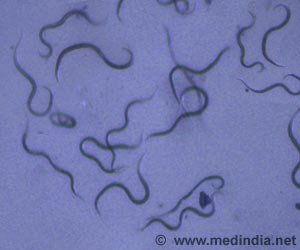Helmintex assay is a better and more sensitive way to detect low intensity schistosomiasis infections.

‘Helmintex method uses a magnetic field to isolate eggs and is a more sensitive method to detect low intensity schistosomiasis infections.’





In the new work, Carlos Graeff-Teixeira of the Pontificia Universidade Catolica de Rio Grande de Sul, and colleagues compared the KK, POC-CCA and HTX methods in a population-based study. 461 children and adults from Candeal, Brazil provided stool, urine, and blood samples for the comparison; an additional 220 submitted at least one specimen type. The prevalence of schistosomiasis was found to be 71% with the POC-CCA method, 40% with HTX, and 11% with KK. More than 70% of individuals had very low egg burdens in their feces. However, the POC-CCA method provided the lowest proportion of true positive results. The HTX method was 100% sensitive with egg burdens higher than 1.3 epg and detected eggs in 29% of the samples that were negative according to the KK method.
"The HTX method is very sensitive and should be used as a reference method for diagnosing intestinal schistosomiasis and for comparative evaluation of other tests," the researchers say. "The HTX method should also be considered for use in the monitoring and certification of transmission interruption."
Source-Eurekalert









